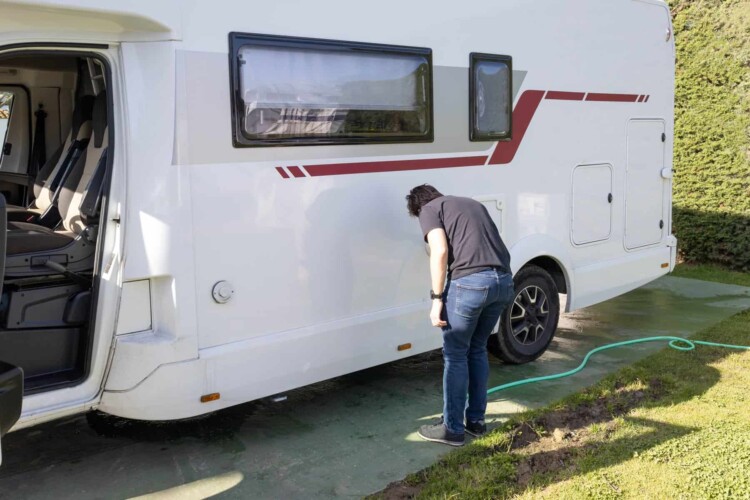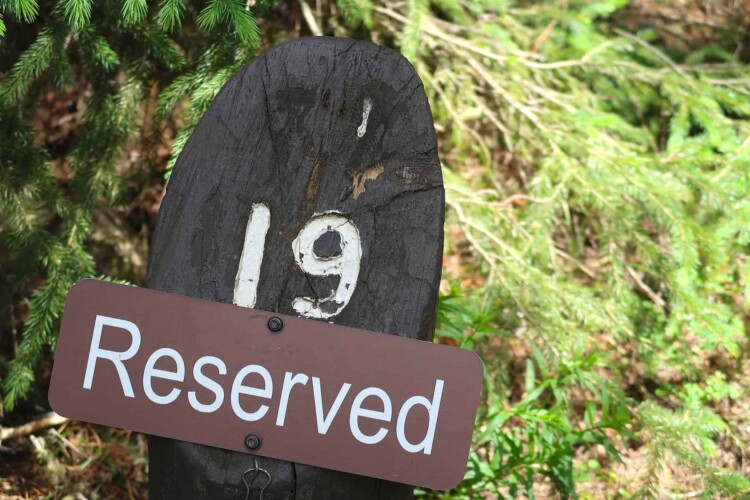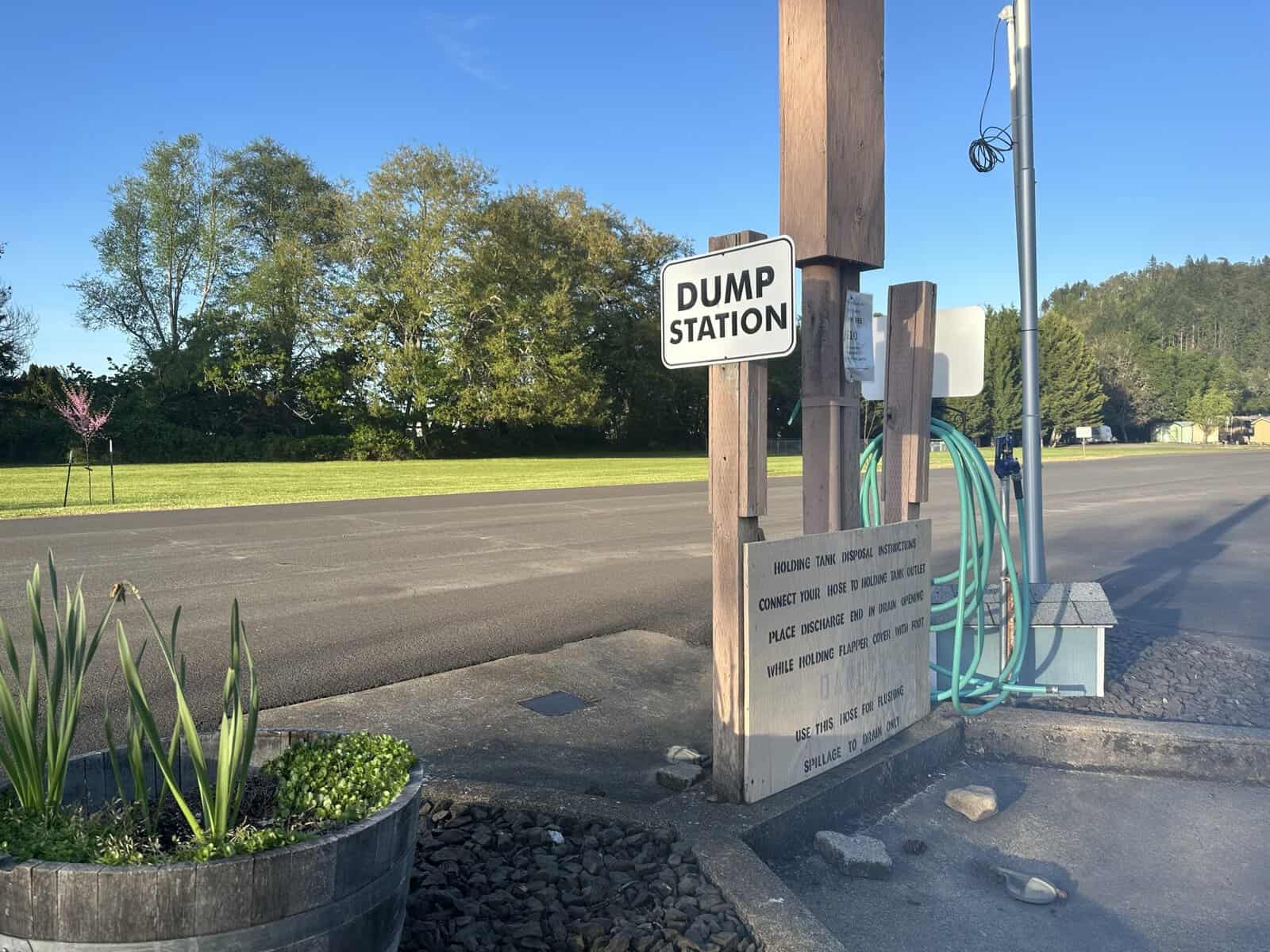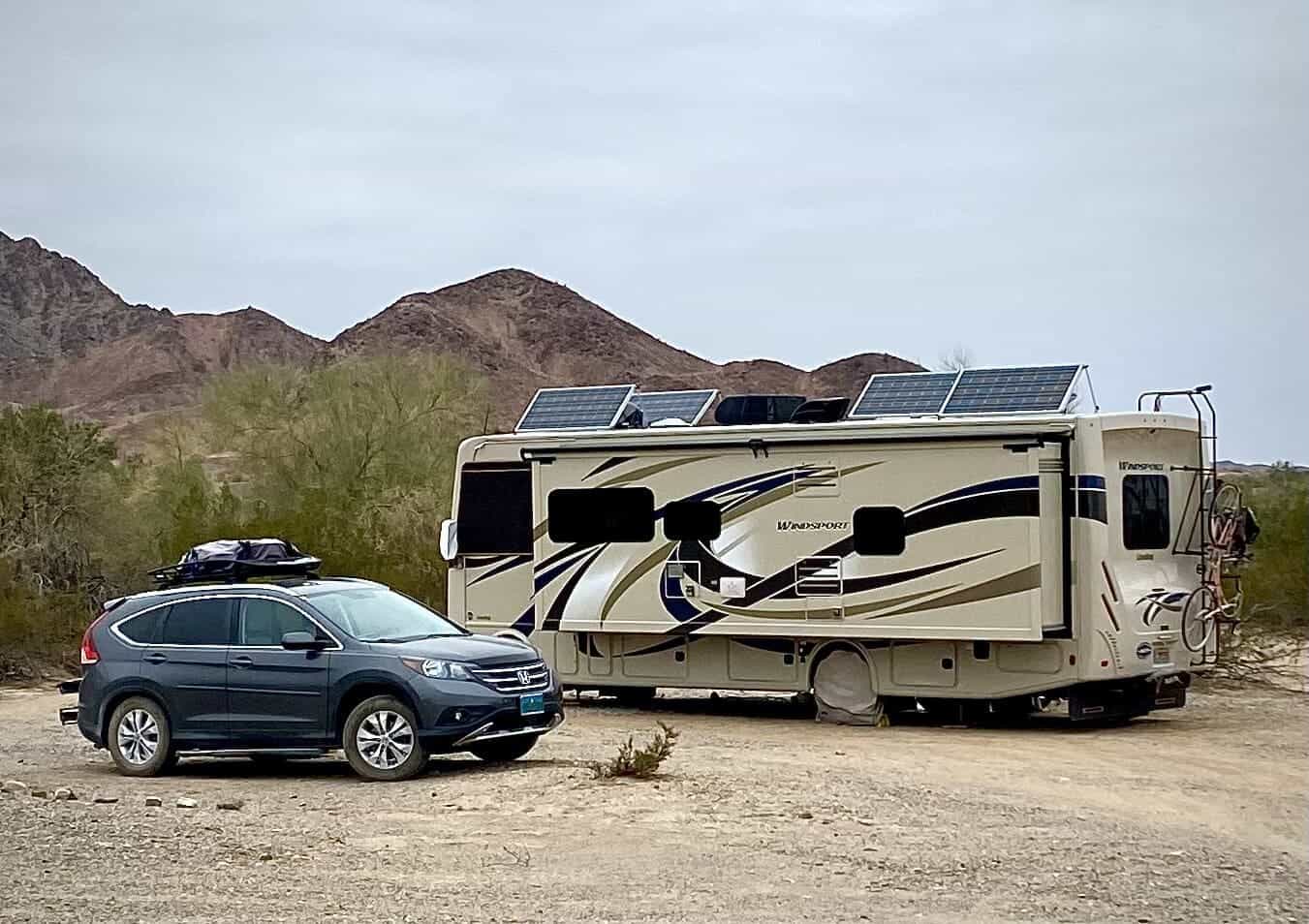Camping season is coming up quick, but don’t turn the key just yet. First, follow these seven critical steps to prep your RV for easy springtime adventures.
A Quick Guide to Prepare Your RV for Spring Camping Trips
For most RVers, winterization and hibernation have been the status quo for months. Are you tired of snow and cold weather? Itching to shop for campsite decorations? Ready to revamp that old pantry? Those are important things to do before camping, but there are other spring RV camping duties that should also be on your To Do list.
Better weather is coming. Take time to read through a few springtime RV maintenance tips and trip planning ideas to gear up for camping season.
RV Spring Camping Tips for De-Winterization and Maintenance
Is your RV stored in a cold climate? If so, you likely performed steps to keep your RV plumbing safe in extreme winter temperatures. Thankfully, it’s time to shake off the snow. Begin with the RV de-winterization process. And don’t forget these spring RV maintenance basics, too.
Check Your RV Battery Health
If you disconnected your battery for the winter, it’s time to verify batter health. Reinstall and ensure all battery connections are snug. Test power levels after a full charge, and keep in mind that according to RVMA, batteries can discharge 10% charge per month while in storage.
Inspect Your RV Tires
Just like your battery, your RV tires may have been slowly discharging during storage. RV tire maintenance tasks include:
- Check your RV tire PSI
- Fill the air to the recommended PSI for your tires
- Give those tires a thorough examination for any wear and tear you might have missed after last camping season.
Fire Up Your RV Generator
Just as you give your truck or RV engine a thorough maintenance inspection, prepare your RV for spring by tuning up your generator before your next boondocking adventure. Check generator oil levels and fire up the exhaust system now, to make sure you don’t get any surprises on the open road.
Is Your RV Water System Ready?
Inspecting your RV water system is a critical step to prepare your RV for spring camping trips. Here are the steps to make sure your RV water lines are clear of antifreeze you used for de-winterization. You’ll also learn how to sanitize your RV water tank.
Prepare your RV for spring by cleaning out your RV water system.
Learning how to de-winterize your RV water system comes down to three basic steps:
- Connect a potable water hose to your city water connection.
- Flush fresh water through all your lines to remove any remnants of antifreeze. Run your sinks, shower, outdoor hose lines, washing machine (if you’re lucky enough to carry one on board!). Water needs to flow through any other faucet you have in your rig.
- Did you add antifreeze to your fresh water tank to winterize it? If yes, fill the fresh water holding tank with clean water, turn on your pump, and keep flushing until your lines run clean.
How to drain RV water lines
In this step you will drain the RV water lines. NEVER drain the water heater when it’s pressurized or already heated.
First drain the RV water heater. Remove the drain plug from the water heater (look at the bottom left hand corner). Now open the pressure relief valve on top of the water heater so it can drain easily.
Next, locate the low point RV water line drains. You’ll see one for hot and one for cold, typically red and blue. These drains are under your rig. They are the very lowest point in the water system. Open these valves to drain all the water out.
Finally, find the drain for the fresh water holding tank. Drain it until it’s completely empty. If you turn the water pump on for just a moment, any remaining drops of water will be forced out.
Congrats—all the water is now out of your system!

Now, we need to sanitize your RV water lines.
You’ll need a half-cup of bleach for every thirty gallons of water that your fresh water tank holds.
Make a diluted bleach mixture with water and pour it into your fresh tank. Then fill your fresh tank with water.
- Turn on your water pump. Then turn on/turn off your faucets (both hot and cold). Let the water and bleach mixture sit in the tank overnight if possible.
- In 24 hours, it’s time to eliminate any signs of bleach from your drinking water. Fill your fresh tank with clean water, turn on your water pump, and flush your entire system again. (And again. And again, if necessary.)
- Once you don’t detect any bleach, you’re ready to roll for a healthy and hydrated camping season!
RV technical editor Dave Helgeson has more detail about how to spring clean RV septic and water lines.
Take Time for RV Cockpit Updates & Gear Organizing
Do you use a GPS system specifically for RVers? Is there a TPMS system that is connected to your phone by Bluetooth? Do you have backup cameras that have a monitor on the dashboard?
This is the time to prep your RV for spring driving, by making sure your apps are updated. ready to go with software, maps, connections, or anything else that may have been collecting dust for the past few months. Spring is also a great time to review RV organizing and decluttering tips.
Apply for Destination Permits
Your travel plans might include some epic hiking, swimming in a secluded swimming hole, or biking up a mountain pass in one of our national parks this spring. Awesome! What would NOT be awesome? Getting there and realizing you needed permits in advance.
Many public and private attractions now require advance reservations. Some have started lottery systems for guest permits. Many national park permit systems are now in place for spring and summer camping and activities.

Let’s say for instance you’re planning a Yosemite vacation, and you want to hike Half-Dome. Currently the national parks has placed a limit of about 75 hikers per day. You’ll need to pre-arrange your visit by obtaining a hiking permit.
Or, maybe you’ve seen gorgeous photos of The Wave in Coyote Buttes North. The hiking landscape is other-worldly, but so is the wait time to visit. To enter a lottery for these hiking permits, you’ll need to apply for hiking dates four months into the future.
It’s always fun to be spontaneous. But for stress-free RV travel, make sure you and your RV are prepared for spring camping by booking appropriate permits at your destinations.
Make Camping Reservations
Once your rig has undergone maintenance and you know what area you’d like to visit, you’ll need a place to camp. Whether boondocking or staying in the lap of luxury, at some point in your travels you’ll likely need campground reservations.
Take advantage of great tools like RV LIFE Pro to plan your trip and check out campground reviews. You’ll want to then book those destinations by visiting Spot2Nite.com or downloading the Spot2Nite mobile app.

With Spot2Nite, RV travelers can search available dates and locations to instantly book RV spots without making any phone calls to the park. With more RVs on the road than ever before, it’s never too early to book your spot.
What great camping destinations are on your spring “Must-Visit List”? Do you have any annual rituals to prepare your RV for spring? How do you get ready for camping season? We’d love to hear from you!



